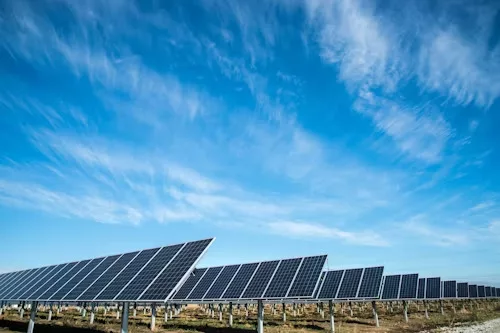Streamlining Climate Action
Climate change remains one of the gravest challenges facing humanity, and actionable plans to mitigate its impact are crucial. Simplifying the vast array of climate strategies into a digestible checklist can empower more people to take meaningful action. This concise plan aims to encompass vital sectors such as energy, transport, agriculture, and industry, while remaining intentionally clear and straightforward. Core actions include:
- Transitioning to electrically-powered systems
- Expanding renewable energy generation beyond current targets
- Creating large-scale electrical grids and markets
- Investing in various energy storage solutions like pumped hydro
- Embarking on extensive reforestation efforts
- Shifting to sustainable agricultural methods
- Revolutionizing manufacturing processes in heavy industries
- Implementing aggressive carbon pricing models
- Phasing out fossil fuel-based power generation
- Withdrawing financial support for fossil fuel industries
- Eliminating the use of HFCs in cooling systems
- Avoiding distractions from non-viable technologies
- Understanding the underlying motivations in energy politics
This approach offers a direct path to substantive climate action, avoiding the pitfalls of complexity and confusion that often accompany more detailed proposals. It is accessible to the informed public and aims to steer clear of the quagmire of misinformation.
Energy Transformation and India’s Role
India, with its burgeoning economy and vast population, plays a pivotal role in global climate action. It has demonstrated leadership in sectors such as rail electrification and electric bus deployment, overtaking many Western nations in this regard. The country’s embrace of electrification and renewable energy sources showcases its potential to contribute significantly to the global energy transition.
The Efficiency of Electrification
An analysis by Lawrence Livermore National Laboratory offers profound insights into national energy use. The data underscores a massive waste of energy in the form of heat, mainly due to fossil fuel combustion. Transitioning to an electrified economy powered by renewables can drastically reduce this inefficiency and decrease the total energy requirement, suggesting that a nation like India can benefit massively from adopting electric-powered systems over traditional fuel-based models.
Advocating for Oversized Renewable Infrastructure
With the increasing redundancy of traditional baseload power concepts, the energy industry is shifting towards a renewable-centric model. Solar and wind farms, even with their intermittent nature, provide more consistent energy production when built with additional capacity. Such overbuilt systems could circumvent the limitations of renewables’ variability, ensuring a consistent and sustainable energy supply.
Pioneering Larger Electrical Grids and Markets
High-Voltage Direct Current (HVDC) technology has emerged as the new frontier of efficient, long-distance power transmission. India’s substantial investment in HVDC positions it as a global front-runner, with plans for further expansion and regional energy cooperation. Updated market mechanisms enhance grid management, underscoring India’s forward-thinking approach to modernizing its energy infrastructure.
Innovating in Energy Storage
The growth of renewable energy emphasizes the need for firming the electricity supply. Pumped hydro storage is gaining attention as a sustainable and large-capacity solution. India’s investment in pumped hydro, despite modest projections, aligns with global trends, acknowledging the technology’s historic and future role in energy storage at scale.
Rethinking Afforestation and Agriculture
While planting a trillion trees is a herculean task, it serves as a crucial element in the carbon drawdown and ecosystem restoration efforts. India’s comparative analysis with China’s aggressive reforestation efforts illuminates the long-term benefits of such large-scale environmental projects. Similarly, transforming agricultural practices with modern technology, like drone-assisted farming and low-tillage methods, can lead to greater efficiency and environmental preservation.
Revamping Concrete, Steel, and Industry
India’s steel production, riding on the wave of increased scrap steel usage, paves the way for decarbonizing heavy industries. Considering the direct reduction of iron using renewable energies, green hydrogen advancements, and the electrification of industrial processes, India stands to make significant emission reductions while maintaining industrial growth.
The Imperative of Carbon Pricing
A robust carbon pricing system is an essential catalyst for reducing emissions. While India’s carbon market is currently voluntary, transitioning to a regulated pricing mechanism could significantly incentivize emission reductions across sectors. Learning from international models like the EU’s Carbon Border Adjustment Mechanism or Canada’s carbon tax could guide India in strengthening its commitment to climate goals.
Eradicating Fossil Fuel Dependency
The health and environmental costs of coal and gas are too great to overlook. An aggressive plan to sunset the most damaging coal plants, akin to strategies in China, could reduce both pollution and emissions. Successfully managing the decline of fossil-based energy requires careful alignment with renewable expansion, for which India’s role in shaping the future energy market is crucial.
Eliminating Incentives for Fossil Fuels
Subsidies for fossil fuels significantly distort energy markets and undermine environmental efforts. India, by aligning its subsidy policies with cleaner energy alternatives, can fuel its green transition financially and ecologically. Reallocating subsidy funds to renewable projects can support India’s energy transition and drive a cleaner economy.
Accelerating the Phase-Out of HFCs
The global phase-down of HFCs under the Kigali Amendment requires swift action. As cooling demands increase, transitioning to alternatives like heat pumps is essential. India’s less-aggressive phasedown of HFCs puts it at a competitive disadvantage in the international market, potentially hampering its technological and economic adaptability to global sustainability standards.
Narrowing Focus: Avoiding Energy Distractions
Distracting technologies like nuclear energy and hydrogen for transport, which promise more than they deliver, can sidetrack meaningful climate action. A country like India would benefit from focusing on proven renewable technologies rather than investing in these less viable options. Resources dedicated to scaling renewable energy and storage solutions are far more likely to result in tangible emission reductions and energy security.
Understanding Underlying Incentives
As the global energy landscape undergoes seismic shifts, recognizing the motivations behind policy decisions and technology investments is more important than ever. The transition away from fossil fuels to renewable energy sources is as much an economic transformation as it is an environmental one. India’s awareness of its role in this transition, its motivations, and its potential global impact will be essential as it strategizes its energy future.
